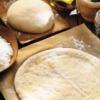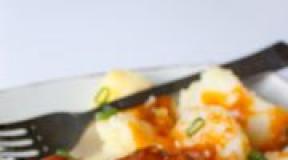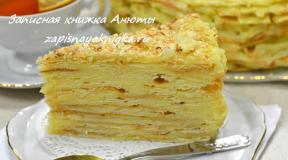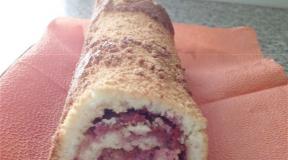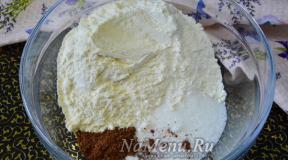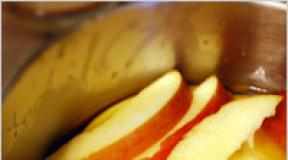Starter cultures for cheeses: types, instructions, reviews. Home cheese making
starter cultures, or starter cultures, is one of the fundamental ingredients involved in the formation of the taste of cheese and in its maturation. The air and raw milk contain a large number of various lactic acid bacteria, therefore, if you leave milk at room temperature, you can get rustic sour cream, cottage cheese, and yogurt from it. However, in the production of cheese, only certain types of such bacteria are used, which are called cheese cultures. The strains of these bacteria form starter cultures, which are then added to milk (inoculation).
Sourdough affects all stages of cheese making, and it is thanks to sourdough that the cheese gets the ability to ripen. Cheese starters, by increasing the acidity of milk, prevent the growth of pathogenic bacteria, and also, by regulating the amount of calcium in milk, contribute to an active coagulation process. Different bacterial cultures affect the texture and texture of cheese in different ways and at different speeds, changing it every day of ripening. Some cheeses made from raw milk are made without the introduction of additional cultures (everything necessary for maturation is already contained in raw milk), however, for the production of the bulk of cheeses, giving the cheese certain characteristics, as well as in the manufacture of cheeses from pasteurized milk, specially formulated for a certain sourdough cheese varieties, usually consisting of a combination of strains of various bacteria bred in the laboratory.
Starter cultures for cheese making can primarily be divided into mesophilic and thermophilic. Mesophilic and thermophilic starter cultures may contain a different set of bacterial strains, which makes them different in flavor and aroma properties. Some subspecies of starter cultures prevent the development of pathogenic microflora, others serve to give the cheese a certain consistency (for example, propionic bacteria - to produce holes in Swiss cheeses).
Starter cultures can be monospecies(contain one strain of bacteria) and polyspecific(contain in its composition several strains of bacteria). In turn, the bacteria used in starter cultures are homofermentative and heterofermentative.
Homofermentative lactic cultures- in the process of lactic acid fermentation in cheese, mainly lactic acid is produced. As a result, we get a closed texture of cheese dough, without eyes.
Heterofermentative lactic acid cultures- in the process of lactic acid fermentation in cheese, in addition to lactic acid, acetic acid, ethanol, carbon dioxide are produced, which leads to the formation of eyes in the cheese dough.
Mesophilic starter cultures
used in the manufacture of cheeses with a low temperature of the second heating (up to 38 ° C). They are used to prepare most soft, fresh and hard cheeses.
Almost all mesophilic cheese starters contain strains of bacteria Lc.lactis and Lc.cremoris. Starter cultures containing only these 2 strains are homofermentative and are suitable for most hard, semi-hard, soft and brined rennet cheeses with a closed structure (without eyes). These are starter cultures: CHOOZIT MA11 (Danisco), Uglich-7 (FSUE Experimental Biofactory).
Bacteria strains Lc.diacetilactis And Leuc. mesenteroides are responsible for the release of carbon dioxide during the ripening of cheeses, which enhances their flavor and aroma properties, and also forms eyes in the body of the cheese. Starter cultures containing this strain together with the two previous ones are suitable for all types of cheeses with eyes (Gouda, Russian), ideal for soft cheeses. These are starter cultures: CHOOZIT MM101 (Danisco), Uglich-S (FSUE "Experimental Biofactory"), KAZU 1000 (Danisco), СHN-19 (Christian Hansen), Uglich-7K (FSUE "Experimental Biofactory") (with L.casei, which accelerates the ripening of cheeses up to 2 times), Uglich-4 (FSUE "Experimental Biofactory"), Flora Danica (Christian Hansen).
Thermophilic starter cultures
are used in the manufacture of cheeses with a high temperature of the second heating (from 38 to 65 °C, each starter has its own minimum and maximum temperature). They are used to prepare Italian cheeses (provolone, pasta filata), Swiss cheeses (Emmental, Maasdam, Gruyère). As a rule, thermophilic starters are monospecies, i.e. contain one strain of bacteria Str.thermophilus. These are starter cultures Uglich-TNV (FSUE Experimental Biofactory), CHOOZIT TA 5 0.5 2 (Danisco), CHOOZIT TA 60, 62 (Danisco). But there are also multispecies starter cultures that contain strains of additional aroma bacteria, such as Lb. helveticus, Lb. delbrueckii ssp. lactis (gives a spicy taste, used in the production of Swiss and Italian hard cheeses), Lb. delbrueckii ssp. bulgaricus (Bulgarian stick, for Italian drawn cheeses of the Pasta Filata family)
Mixed starter cultures
Additional crops
There are a number of starters that work only in combination with basic thermophilic or mesophilic starters. These are cultures serving for:
Additional aroma formation ( CHOOZIT Helv A, CHOOZIT LH 11, 100 CHOOZIT FLAV 25, 54 )
Cheese maturation acceleration ( Uglich-K)
The formation of large eyes in Swiss cheeses ( CHOOZIT Eyes, Uglich-PRO)
Protection against butyric fermentation in cheeses (Uglich-P)
A large summary table of starter cultures for making cheese
In the table below, we have collected information on all (or almost all) commercially available starters for making cheese. A separate sheet contains data on mold cultures for cheese. The table is regularly updated and supplemented.
Rules for the use of starter cultures
Thermophilic and mesophilic starters are usually sold in powder, which can be added directly to milk 30-40 minutes before the introduction of the coagulant. This is the most convenient and safest way to work with starters. Just sprinkle this starter on the surface of the milk, let it absorb moisture for 2-3 minutes, and then stir, distributing it throughout the milk for 5 minutes. To activate direct-introduced starter cultures, it takes from half an hour (follow the instructions in the recipe).
But there is a much more economical option - cooking maternal (production) leaven. Those. the powder is added to a small amount of milk (approximately 1/4 tsp per liter of milk) and left for a long time to "activate" (reproduction and growth of bacteria). Ready mother starter can be stored in the refrigerator for up to 3 days, or frozen for up to 60 days. Theoretically, a production starter can also be used to create a new production starter, but this process cannot be repeated indefinitely: you will taste it in the resulting cheese.
As a rule, it is required to introduce industrial starter in the amount 1-1.5% of total milk, i.e., for example, 9 liters will need 90-100 ml. production leaven.
Important: mother starter needs to be prepared under perfectly sterile conditions, otherwise it will become unusable.
Preparation of the mother mesophilic starter culture
Ingredients: 1 liter 1/4 tsp dry mesophilic starter.
- Carefully remove the can of milk and cool it to 24°C.
- Leave for maturation and reproduction of bacteria for 18 hours at 24°C.
- The culture can be stored in the refrigerator for up to 3 days. Frozen - up to 3 months. To freeze the mother culture, place it in ice cube trays (sterilized) and place in the freezer. Defrosting is allowed only naturally, not in the microwave. Avoid bare-handed contact with frozen sourdough cubes: do everything with sterile gloves.
Preparation of mother thermophilic starter
Ingredients: 1 liter skimmed (0-0.3%) milk (not UHT), 1/4 tsp dry thermophilic sourdough.
Inventory: liter jar with a lid.
Before starting cooking, thoroughly wash and sterilize the inventory (make sure that there is no detergent left on the walls).
- Pour the milk into a jar and close the lid.
- Submerge the jar completely in a large pot of water.
- Bring the water in a saucepan to a boil and simmer for 30 minutes over low heat.
- Carefully remove the can of milk and cool it to 43°C.
- Sprinkle the starter over the surface of the milk. Let it absorb moisture for 3 minutes. Then mix well, distributing throughout the volume of milk.
- Leave for maturation and reproduction of bacteria for 4-6 hours at 43°C.
- The result is a mother culture that has the consistency of yogurt or buttermilk.
- Taste the sourdough: it should be sour and slightly sweet.
- After the test, it is necessary to quickly cool the starter: put it in the refrigerator.
Preparation of industrial meso-thermophilic starter
Ingredients: 1 liter skimmed (0-0.3%) milk (not UHT), 1/4 tsp dry mixed meso-thermophilic starter culture of direct introduction.
Inventory: liter jar with a lid.
Before starting cooking, thoroughly wash and sterilize the inventory (make sure that there is no detergent left on the walls).
- Pour the milk into a jar and close the lid.
- Submerge the jar completely in a large pot of water.
- Bring the water in a saucepan to a boil and simmer for 30 minutes over low heat.
- Carefully remove the can of milk and cool it down to 40°C.
- Sprinkle the starter over the surface of the milk. Let it absorb moisture for 3 minutes. Then mix well, distributing throughout the volume of milk.
- Leave for maturation and reproduction of bacteria for 8-12 hours at 40°C.
- The result is a mother culture that has the consistency of yogurt or buttermilk.
- Taste the sourdough: it should be sour and slightly sweet.
- After the test, it is necessary to quickly cool the starter: put it in the refrigerator.
- The culture can be stored in the refrigerator for up to 3 days. Frozen - up to 3 months. To freeze the mother culture, place it in ice cube trays (sterilized) and place in the freezer. Defrosting is allowed only naturally, not in the microwave. Avoid bare-handed contact with frozen sourdough cubes: do everything with sterile gloves.
If your starter contains tiny bubbles in step 7 (at least one thing), it is unsuitable for further use, it must be thrown away. Bubbles are a gas produced by yeast or E. coli bacteria. This means that the dishes were not sterile, or the milk was contaminated with these bacteria. Exceptions are cultures containing strains of bacteria diacetylactis - in such a production starter, the presence of bubbles is acceptable.
Rennet is a complex organic substance that is produced in the stomach of calves, lambs and other newborn cattle.
The phrase "rennet" comes from the word "abomasum", or "abomasum" - a salted and dried piece of the stomach of young mammals.
As you know, such a substance contributes to the breakdown, as well as the processing of mother's milk, which the cub consumes.
It should be especially noted that this enzyme cannot be obtained artificially. In this regard, it is quite expensive, but very effective in the preparation of dairy products.
But at present there are milk-clotting enzymes not only of animal, but also of chemical and vegetable origin.
According to their amino acid composition, all available enzymes are approximately the same, and “rennet cheese” is now usually called cheese made using any milk-clotting enzymes.
Types of rennet for cheese
As enzymes for home-made cheese, you can use: pharmacy pepsin, acidin-pepsin, rennet of animal origin, artificial pepsin (chymosin), enzymes of plant origin.
pharmacy pepsin. It has two drawbacks. Its deficit. In free sale in pharmacies, it is very rare, and if it does, it is now, as a rule, dispensed by prescription. At cost, pharmacy pepsin is several times more expensive than specialized enzymes.
Acidine-pepsin. Acidin-pepsin is very poorly soluble in water, and given that according to the technology the water must be cool, this process can take a long time and become quite laborious.
Flaws:
The disadvantages include a significant cost.
The curdling time of milk is much longer than with specialized enzymes.
Some experts warn against the use of acidin-pepsin due to the fact that it contains hydrochloric acid, and besides, it is a drug.
Short shelf life and capriciousness to storage conditions.
Rennet of animal origin. The most common are pork and.
The advantages include a lower cost compared to the above pepsins.
Flaws:
The enzyme is produced from animal components (stomachs), which somewhat negatively affects the shelf life.
Some cheese makers claim that with an overdose of the enzyme, the cheese begins to taste bitter.
Capriciousness to storage conditions and a shorter shelf life compared to chemical and vegetable enzymes.
Artificial pepsin (chymosin) does not have the disadvantages of the above enzymes, except for the cost - it is not much lower.
The safety of this drug remains questionable, especially for those who use it in home cheese making. But, due to its insignificant concentration in the final product, this is sometimes neglected.
Enzymes of vegetable origin are the most suitable enzymes for homemade cheese making. They are universal and are used for the production of almost all known varieties of cheese, including vegetarian ones. This is due to the absence of animal and chemical components in their composition, which has a positive effect on the shelf life and taste of the final product.
Now widespread microbial renin– Japanese-made meito. Its advantages include low cost, long shelf life and completely natural composition. With an overdose of the enzyme, the cheese does not taste bitter, which favorably distinguishes this drug from many others. It is used in the manufacture of kosher cheese for the Jews.
Meito is usually sold in specialty veterinary medicine stores, but more recently you can also order cash on delivery by mail, there are several specialized sites that accept applications for this enzyme.
How to choose rennet
It is a generally accepted and indisputable fact that natural rennet from the abomasum of dairy calves is the best for cheese production.
As for the proportions of enzymes, if until recently it was considered that 100% recombinant chymosin is ideal for the production of most cheeses, in the light of recent studies it has been proven that the proportions of 96% calf chymosin and 4% veal pepsin are optimal.
It should be noted that all rennet enzymes, including microbial ones, have different activity in acid and temperature scales, therefore, by and large, the rennet preparation for each cheese recipe should ideally be selected individually.
The rennet used has a direct effect on the taste and smell of the cheese, as well as the consistency of the curd.
It is possible in our online store with delivery by Russian post or courier service.
As you know, cheese is a useful product and familiar to mankind for more than one millennium. It is prepared from the milk of ruminants: mainly cow, goat, sheep, mare. But not everyone knows that special starter cultures for cheeses are also used in cheese making, which, by the way, can also be of different origin. It is clear that the product prepared at home will be both tastier and healthier than store-bought. Especially in the light of recent checks, which showed that the production of many cheeses does not follow the required technology and that additives are added that are completely unnecessary and spoil the natural taste. This is done, as a rule, in order to save on the cost of production, and in order to increase the shelf life of the fermented milk product. So sourdough will obviously come in handy for you if you have already come close to the question of how to make it yourself. That way you'll at least know exactly what it's made of.
Types of homemade cheeses
What can be produced in your kitchen using cheese starters is divided into three types.
- Hard cheeses. They are made on the basis of sourdough for cheeses and cottage cheese. They are kept under a special press (you can do it yourself or buy it in a store, but it will cost a pretty penny). Exposure occurs for at least a month. The longer the exposure, the better the taste after. The density of the structure of the body of the product is largely dependent on the time and weight of the load of the press. Another nuance: making hard cheese is possible only from
- Soft cheeses. Cheese starters and cottage cheese are also used here. The difference with solid variants is mainly in the exposure time. And soft cheeses are also made from skimmed milk, and the product can be consumed after a week (at the same time, soft types are not covered with paraffin for long-term storage).
- Homemade cheeses (like Adyghe, suluguni or feta cheese). They are also made from cottage cheese, which has a fairly high liquid content. The shelf life of such cheeses is short. And they are made mainly from skimmed milk (but you can also from whole milk). Such products are quite simple to manufacture, they do not need to be kept under pressure.

What is needed to make
- It is desirable to take whole milk (mostly cow's milk in modern conditions). The main thing is to choose quality. Clarify that antibiotics are not used when feeding the animal (at least for a week, as they slow down the oxidation process). It is best if you have a private economy and your own horned ones, or you have the opportunity to constantly buy raw materials from friends, leaders. It should be remembered that from 10 liters of milk you can get only one kilogram of hard cheese, or 1.5 kg of soft cheese, or suluguni.
- From the equipment - it can be built cheaply and with your own hands, so as not to buy expensive imported options - you will need: (can be made from ordinary cans), a press with a piston (at home it is made from boards and a clamp), a liquid thermometer, a knife, a colander, gauze, paraffin (if we are preparing hard cheese).

Cheese starter at home
And, of course, sourdough is essential for cheese. It must be used so that it stimulates as quickly and as well as possible the formation of the amount of acid that would be sufficient for the correct process. In home cheesemaking, buttermilk, yogurts, and powder starters, and natural milk, obtained naturally, and yeast are used. Keep in mind that the character that a cheese starter has (more precisely, its origin) directly affects its taste and aroma. So you have to choose options, correlating your own tastes and preferences with classical technologies.

Cheese. Leaven. The recipe is the easiest
We leave half a liter of fresh natural whole milk to sour at room (or slightly higher) temperature. Usually a day is enough at an optimum temperature of 30 degrees. We use this starter, adding it to the main raw material, in the production of homemade cheeses that do not require the use of a press.

Another option
Sourdough for homemade cheese can also be prepared with yeast. Add 1/8 stick of yeast to warm milk. We leave this mixture to wander for a day in a warm place. Then we pour out half of the milk and add fresh. We do this throughout the week. During this time, the sourdough will mature and be ready to use. We add it to the main raw material.
Abomasum
This product has long been known in cheese making as a starter for homemade cheese. And in the cheese industry it is used very actively for the production of most cheeses. What is this substance? Even the ancient Greeks, according to scientific data, using the stomachs of ungulates as containers for liquids, most likely accidentally discovered the phenomenon of its effect on dairy products. Or maybe this technology was known before? In ruminants, this is the 4th section of the multichambered stomach (glandular stomach). In calves (or lambs), for example, who feed on mother's milk, a special rennet is actively produced there, which is involved in digestion - rennin. It breaks down peptides. This one is the first one isolated chemically, in the laboratory. By the way, the Dane Christian Hansen, who discovered it by salt extraction in 1874, subsequently founded a company that is still the largest manufacturer of the enzyme. The main source is the stomachs of dairy calves (age - no more than 10 days), dried and ground in a special way. Rennet is the main substance used in cheese making.
Process essence
With the introduction of rennet into milk under certain temperature conditions, the process of rapid coagulation of milk begins - curdling. At home, using abomasum is quite easy, so there is no need to be afraid of this. We just take a tablet or extract (in the form in which it is usually sold) and dissolve in milk at room temperature (or a little higher). The effect is visible within an hour. By the way, the use of rennet is not at all necessary in the production of homemade cheeses of a soft category. It is enough to use starters from naturally sour milk. The only inconvenience is that the curdling process will take much longer. Usually - a little more than a day. During this time, the clot - the curd beginning - and the whey manage to separate. But still, some people prefer to use abomasum at home to improve the taste and speed up the maturation of the cheese.

For Vegetarians
Many questions among vegetarians are caused by the use of an animal enzyme in the production of cheese. Therefore, in recent times (for example, in Europe), substitutes for rennet have been used for cheese making. Back in the 60s of the last century, the corresponding strains of fungi were isolated, which are involved in the synthesis of the enzyme. And since the early 90s, genetic biotechnology and rennin produced by bacteria have been used. According to unverified data, more than half of the cheese products in Europe are now produced with such substitutes. But some firms still adhere to more traditional technologies in cooking and use animal rennet.

At the pharmacy
By the way, such a starter for cheese is also suitable for home cooking of a delicious fermented milk product. The pharmacy sells pepsin. The only drawback is some high cost of the pharmacy enzyme and its deficiency. But if you have the opportunity to get this medicine, feel free to use it for the production of homemade cheeses.
WHAT STARTERS ARE
Getting good cheese without using a special cheese starter is almost impossible. After all, it is thanks to the sourdough that the unique aroma, taste and texture of the cheese are formed, and the sourdough also helps the cheese to ripen. A variety of starters allows you to get the same variety of cheeses.
To date, a huge number of varieties of starter cultures have been produced, different manufacturers have an excellent composition, variations, and packaging.
To choose the right starter, you need to be guided by its composition and properties. From what result we want to get, we need to choose a suitable starter by reading its composition and properties.
TYPES starter cultures
Consider two types of sourdough - mother sourdough and direct sourdough.
mother sourdough
It is a pure culture of certain lactic acid bacteria that should be initially grown in milk. After the already prepared sourdough is added to milk for the production of cheeses. And fresh milk is constantly added to the starter itself, reproducing it. At home, this type of starter is quite difficult to create and maintain, because it can peroxide or unwanted bacteria can get into it by air, and you need to use it constantly to make only one type of cheese.
Starter cultures
For home cheese making, the most convenient are still - DVI cultures (direct vat innoculant cultures).
This is a powder made from a pure culture of lactic acid bacteria, dried at a strong sub-zero temperature. This powder is added directly to milk in dry form, then the milk is left to mature for 30-40 minutes (bacteria multiply and acidity decreases).
KINDS starter cultures
Starter cultures according to the composition of their bacteria are mesophilic, thermophilic and mixed.
- used at low temperatures - 25-30°C.
It is the most commonly used starter for the production of many types of cheese.
With it, you can cook, for example, soft and fresh cheeses ( ), fresh aged cheeses ( , , Bree and others ), semi-soft cheeses ( ) , solid ( , , Emmental, Manchego, etc.).
- used at higher temperatures - 30-40°C, can also survive at 65°C.
With its help, Italian draft cheeses are prepared with a high temperature of the second heating. - , Provolone, Romano, etc., as well as Swiss cheeses.
What bacteria included in starter cultures
and what they influence in cheese making
When describing starter cultures, you can find - "monospecies concentrate" and "polyspecies concentrate":
- monospecies concentrate- contains only one strain (species) of bacteria,
- polyspecies concentrate- contains several strains (species) of bacteria at once.
The composition of any polyspecies concentrate includes acid-forming mesophilic microflora of the starter.
- Lactococcus lactis subsp. lactis (milk lactococcus is the basis of any . He makes the milk ferment. The optimum growth temperature is 28-32C. For cheese production - Cheddar, Gouda, Emmental, Brie, etc.),
- Lactococcus lactis subsp. creamoris (creamy lactococcus is also one of the main components of the sourdough, it gives the cheese a pleasant creamy taste. For a creamier cheese taste, you need to choose just such a sourdough. The optimal growth temperature is 22-30C.),
- Lactococcus lactis subsp. diacetilactis (diacetyl lactococcus) is a gas-producing bacterium. The difference between Lactococcus lactis subsp. diacetilactis from the two subspecies described above - the CO2 formed by this subspecies helps shape the pattern of many hard cheeses. It is the drawing that is an important indicator of the quality of cheese - the more "holes" in the cheese, the better. The optimum growth temperature is 28-32C. For the production of cheeses with a loose porous structure (such as , as well as Feta, cheese, butter).
So, if you produce cheese like Cheddar with a dense homogeneous mass without cracks and holes, then you should avoid using a starter with the bacterium Lactococcus lactis subsp. diacetilactis.
In addition, the composition of the polyspecies concentrate includes acid-forming thermophilic starter microflora.
It includes the following types of bacteria:
- Streptococcus salivarius subsp. thermophilus or Streptococcus thermophilus(thermophilic streptococcus is the basis of most. You can use the starter with this bacterium for the preparation of draft cheeses Mozzarella, Porvolone, , Cheddar, Cachotta and other cheeses with a high temperature of the second heating. In addition, these starters are added along with mesophilic ones to reheated cheeses, for example, Parmesan, Emmental, Romano, etc.). Please note that the sourdough used inviscid races Streptococcus thermophilus. Viscous races are not suitable for cheese production - they will not turn into cheese grains, they are suitable for sour cream and yogurt).
- Lactobacillus delbrueckii subsp. bulgaricus (bulgarian stick - usually used for the production of yogurt. In Italian cheeses it is sometimes used for Caciotta or Parmesan. The optimum growth temperature is 40-45C).
- Lactobacillus helveticus (thermophilic culture - allows you to significantly increase the acidity of the whey and accelerate the ripening of the cheese mass. It is used in bacterial starter. The optimum growth temperature is 40-44C).
In addition to acid-forming starter cultures, the composition of the polyspecies concentrate includes gas and sourdough.
TO gas generating include the following types of bacteria:
- Leuconostoc sp. (leucostocks - serve to improve the pattern of cheese. Optimum growth temperature is 20-30C)
- Propionibacterium freudenreichii ( - help to get large cavities in the cheese. It is important that the size of the cheese head must be at least 5 kg in order for the bacteria to “work”. Used for the production of such cheeses as Maasdam, Emmental. The optimum growth temperature is 22-30C).
Additionally, the following types of bacteria are used for cheese production:
- Lactobacillus plantarum - hostile to the bacteria of the group of Escherichia coli. If you are not pasteurizing milk, then use starters that contain this type of bacteria.
- - inhibits the growth of unwanted microorganisms: yeast, mold and heterofermentative lactic acid bacteria.
- Lactobacillus casei - accelerates the ripening process of aged cheeses by almost half.
After reading the composition of any sourdough, you can choose exactly the one that you need.
Preparation of moonshine and alcohol for personal use
absolutely legal!
After the demise of the USSR, the new government stopped the fight against moonshine. Criminal liability and fines were abolished, and an article prohibiting the production of alcohol-containing products at home was removed from the Criminal Code of the Russian Federation. To this day, there is not a single law that prohibits you and me from engaging in our favorite hobby - making alcohol at home. This is evidenced by the Federal Law of July 8, 1999 No. 143-FZ “On the administrative responsibility of legal entities (organizations) and individual entrepreneurs for offenses in the field of production and circulation of ethyl alcohol, alcoholic and alcohol-containing products” (Collected Legislation of the Russian Federation, 1999, No. 28 , item 3476).
Excerpt from the Federal Law of the Russian Federation:
"The effect of this Federal Law does not apply to the activities of citizens (individuals) who do not produce products containing ethyl alcohol for the purpose of marketing."
Moonshine in other countries:
In Kazakhstan in accordance with the Code of the Republic of Kazakhstan On Administrative Offenses dated January 30, 2001 N 155, the following liability is provided. Thus, according to article 335 “Manufacture and sale of home-made alcoholic beverages”, illegal production for the purpose of selling moonshine, chacha, mulberry vodka, mash and other alcoholic beverages, as well as the sale of these alcoholic beverages, entails a fine in the amount of thirty monthly calculation indices with confiscation of alcoholic beverages , apparatus, raw materials and equipment for their manufacture, as well as money and other valuables received from their sale. However, the law does not prohibit the preparation of alcohol for personal purposes.
In Ukraine and Belarus things are different. Articles No. 176 and No. 177 of the Code of Administrative Offenses of Ukraine provide for the imposition of fines in the amount of three to ten tax-free minimum wages for the manufacture and storage of moonshine without the purpose of sale, for the storage without the purpose of sale of apparatus * for its production.
Article 12.43 repeats this information practically word for word. “Production or purchase of strong alcoholic beverages (moonshine), semi-finished products for their production (mash), storage of devices for their production” in the Code of the Republic of Belarus on Administrative Offenses. Paragraph No. 1 states: “Production by individuals of strong alcoholic beverages (moonshine), semi-finished products for their manufacture (mash), as well as storage of devices * used for their manufacture - entails a warning or a fine of up to five basic units with confiscation of the indicated drinks, semi-finished products and devices.
* It is still possible to purchase moonshine stills for home use, since their second purpose is to distill water and obtain components for natural cosmetics and perfumes.










